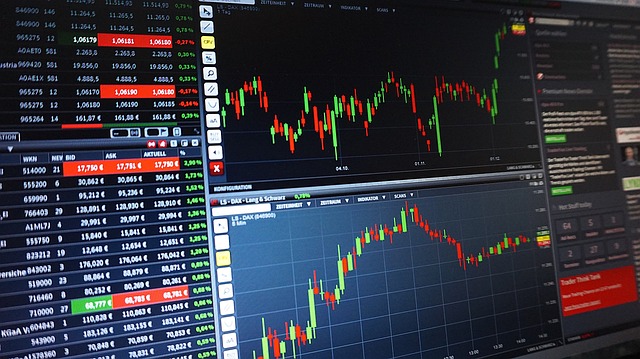The Rise of Algorithmic Crypto Trading: Navigating the Digital Frontier
In recent years, the world of finance has witnessed an unprecedented transformation, largely driven by the advent of cryptocurrencies and blockchain technology. One particular area that has gained significant traction is algorithmic crypto trading. With advances in technology and the ever-increasing volatility of cryptocurrency markets, algorithmic trading has emerged as a powerful tool for investors. This article delves deep into algorithmic crypto trading, exploring its mechanics, advantages, potential pitfalls, and its future trajectory. Along the way, I will share my opinions and insights on this fascinating intersection of technology and finance.

Understanding Algorithmic Trading
Before diving into the specifics of algorithmic crypto trading, it’s important to understand what algorithmic trading is in general. Algorithmic trading refers to the use of computer algorithms to automate trading strategies. These algorithms can execute trades at speeds and frequencies that are impossible for human traders. They are designed to analyze market data, identify trading opportunities, and execute trades based on predefined criteria.
How Algorithmic Trading Works
At its core, algorithmic trading relies on mathematical models and computational techniques. Here’s a basic breakdown of how it works:
- Data Input: Algorithms begin by collecting vast amounts of data from various sources, including market prices, trading volumes, and historical data.
- Signal Generation: Once data is collected, the algorithm utilizes quantitative models to generate trading signals. These signals indicate whether to buy, sell, or hold an asset.
- Order Execution: After generating a signal, the algorithm executes trades based on the criteria set by the trader. This can happen in milliseconds, allowing for rapid market responses.
- Monitoring and Adjustments: Algorithmic trading systems continuously monitor market conditions and performance, making adjustments to strategies as necessary.
The Unique Landscape of Crypto Trading
Cryptocurrency trading presents a unique opportunity and set of challenges compared to traditional asset classes. The market is characterized by high volatility, 24/7 trading, and a plethora of diverse assets. These factors make algorithmic trading particularly appealing in the crypto space.
Advantages of Algorithmic Crypto Trading
There are several compelling advantages to employing algorithmic trading strategies in the cryptocurrency market:
- Speed and Efficiency: Algorithms can analyze and react to market changes in the blink of an eye, capitalizing on short-lived trading opportunities that human traders might miss.
- Emotion-Free Trading: By relying on predefined algorithms, traders can eliminate the emotional component that often leads to poor decision-making.
- Backtesting: Algorithmic strategies can be backtested against historical data to gauge their effectiveness before deploying them in real market conditions.
- Diversification: Algorithms can monitor multiple markets and assets simultaneously, allowing traders to build diversified portfolios more easily.
My Opinion
In my view, the emotional detachment provided by algorithmic trading is one of its strongest benefits, particularly in the notoriously volatile crypto market. It allows traders to stick to their strategies even in the face of market panic or euphoria. However, this leads me to question the balance—how much human oversight is necessary when algorithms run autonomously? It’s a delicate dance between trust in technology and maintaining a vigilant watch over these automated systems.
Challenges and Risks of Algorithmic Crypto Trading
While algorithmic trading holds great promise, it is not without its challenges and risks:
- Market Manipulation: The speed of algorithmic trading can lead to "flash crashes," where prices plummet in seconds due to rapid selling. This raises questions about market integrity.
- Technical Glitches: Algorithms can fail due to bugs or unforeseen market conditions, possibly leading to significant financial losses.
- Overfitting: Traders may create algorithms that perform well on historical data but fail in live market conditions, a problem known as overfitting.
Regulatory Considerations
As algorithmic trading continues to grow, regulatory bodies around the world are beginning to take notice. The unique nature of cryptocurrencies—decentralized, global, and often unregulated—complicates the regulatory landscape. Authorities are tasked with implementing regulations that protect investors while fostering innovation. In my opinion, a balanced approach is crucial; overly stringent regulations could stifle innovation, while a lack of oversight could lead to rampant manipulation and fraud.

The Future of Algorithmic Crypto Trading
Looking forward, the future of algorithmic crypto trading appears bright, albeit filled with challenges to navigate. As machine learning and artificial intelligence technologies evolve, we can expect algorithms to become increasingly sophisticated. This might lead to more effective trading strategies and better risk management practices.
Emerging Trends
Several trends may shape the future of algorithmic trading in crypto, including:
- Integration with AI: The incorporation of AI into algorithms can enhance predictive analytics, making them more adept at anticipating market movements.
- Enhanced Market Data: The availability of more comprehensive data sources will likely lead to better-informed trading strategies.
- Increased Accessibility: As trading platforms become more user-friendly, even less tech-savvy investors may embrace algorithmic trading tools.
My Final Thoughts
In conclusion, algorithmic crypto trading stands at the confluence of innovation, finance, and technology. While it presents immense opportunities for profit and efficiency, it also carries inherent risks that cannot be ignored. I believe that a future where algorithmic trading is both effective and responsible hinges on a collaborative relationship between technology creators, investors, and regulatory bodies. By embracing this synergy, we can unlock the full potential of algorithmic trading within the exciting realm of cryptocurrencies.
Conclusion
The world of algorithmic crypto trading is as exhilarating as it is complex. As we continue to navigate this digital frontier, it is essential for traders, developers, and regulators alike to remain vigilant and conscientious. The winners in this space will not just be those who rely solely on algorithms but also those who can meld human intuition with machine efficiency. In the end, this symbiotic relationship could very well shape the future of trading in general, transforming how we understand and engage with financial markets in the digital age.